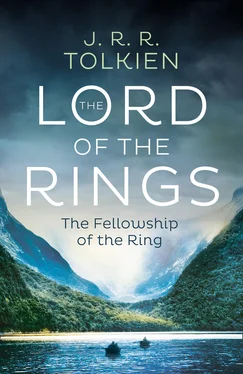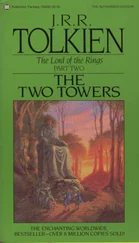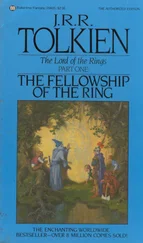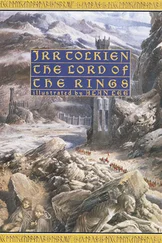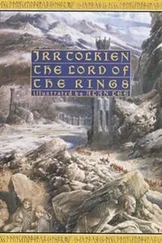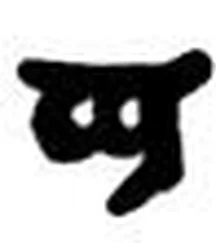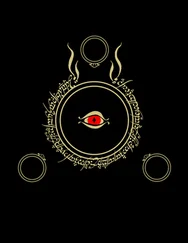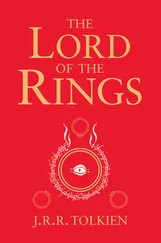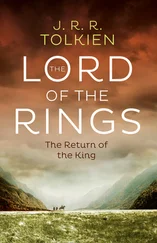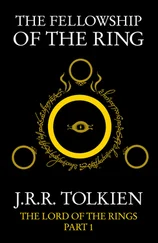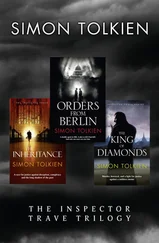Tolkien received his copies of the Ballantine edition in late January 1966, and in early February he recorded in his diary that he had ‘worked for some hours on the Appendices in Ballantine version & found more errors than I at first expected’. Soon after this he sent a small number of further revisions to Ballantine for the appendices, including the now well-known addition of ‘Estella Bolger’ as wife of Meriadoc in the family trees in Appendix C. Most of these revisions, which entered variously in the third and fourth impressions ( June and August 1966) of volume three, and which were not always inserted correctly (thereby causing further confusion in the text), somehow never made it into the main sequence of revision in the three-volume British hardcover edition, and for long remained anomalies. Tolkien once wrote, concerning the revising of The Lord of the Rings , that perhaps he had failed to keep his notes in order; this errant branch of revision seems likely to be an example of that disorder – either in his notes or in the ability of his publishers to follow them with utmost accuracy.
The revised text first appeared in Great Britain in a three-volume hardcover ‘Second Edition’ from Allen & Unwin on 27 October 1966. But again there were problems. Although the revisions Tolkien sent to America of the text itself were available to be utilized in the new British edition, his extensive revisions to the appendices were lost after being entered into the Ballantine edition. Allen & Unwin were forced to reset the appendices using the copy as published in the first Ballantine edition. This did not include Tolkien’s second, small set of revisions sent to Ballantine; but, more significantly, it did include a great number of errors and omissions, many of which were not discovered until long afterwards. Thus, in the appendices, a close scrutiny of the first edition text and of the much later corrected impressions of the second edition is necessary to discern whether any particular change in this edition is authorial or erroneous.
In America, the revised text appeared in hardcover in the three-volume edition published by Houghton Mifflin on 27 February 1967. This text was evidently photo-offset from the 1966 Allen & Unwin three-volume hardcover, and is thus consistent with it. Aside from the first printing of this second Houghton Mifflin edition, which has a 1967 date on the title page, none of the many reprintings is dated. After the initial printings of this edition, which bore a 1966 copyright notice, the date of copyright was changed in 1965 to match the statement in the Ballantine edition. This change has caused a great deal of confusion for librarians and other researchers who have tried to sort out the sequence of publication of these editions.
Meanwhile, Tolkien spent much of the summer of 1966 further revising the text. In June he learned that any more revisions were too late for inclusion in the 1966 Allen & Unwin second edition, and he recorded in his diary: ‘But I am attempting to complete my work [on the revisions] – I cannot leave it while it is all in my mind. So much time has been wasted in all my work by this constant breaking of threads.’ This was the last major set of revisions Tolkien himself made to the text during his lifetime. They were added to the second impression (1967) of the three-volume hard-cover Allen & Unwin second edition. The revisions themselves mostly include corrections of nomenclature and attempts at consistency of usage throughout the three volumes. Some small alterations were made by Tolkien in the 1969 one-volume India paper edition.
J.R.R. Tolkien died in 1973. His third son and literary executor, Christopher Tolkien, sent a large number of further corrections of misprints, mainly in the appendices and index, to Allen & Unwin for use in their editions in 1974. Most of these corrections were typographical, and in line with his father’s expressed intent in his own check copies.
Since 1974, Christopher Tolkien has sent additional corrections, as errors have been discovered, to the British publishers of The Lord of the Rings (Allen & Unwin, later Unwin Hyman, and now HarperCollins), who have tried to be conscientious in the impossible task of maintaining a textual integrity in whichever editions of The Lord of the Rings they have published. However, every time the text has been reset for publication in a new format (e.g. the various paperback editions published in England in the 1970s and 1980s), huge numbers of new misprints have crept in, though at times some of these errors have been observed and corrected in later printings. Still, throughout these years the three-volume British hardcover edition has retained the highest textual integrity.
In the United States, the text of the Ballantine paperback has remained unchanged for more than three decades after Tolkien added his few revisions in 1966. The text in all of the Houghton Mifflin editions remained unchanged from 1967 until 1987, when Houghton Mifflin photo-offset the then current three-volume British hardcover edition in order to update the text used in their editions. In those new reprintings a number of further corrections (overseen by Christopher Tolkien) were added, and the errant Ballantine branch of revision (including the ‘Estella Bolger’ addition) was integrated into the main branch of textual descent. This method of correction involved a cut-and-paste process with printed versions of the text. Beginning with the 1987 Houghton Mifflin edition, an earlier version of this ‘Note on the Text’ (dated October 1986) was added to The Lord of the Rings . This ‘Note’ has been reworked three times since then – the version dated April 1993 first appeared in 1994, and the version dated April 2002 came out later that year. The present ‘Note’ replaces and supersedes all previous versions.
For the 1994 British edition published by HarperCollins, the text of The Lord of the Rings was entered into word-processing files. This next stage of textual evolution came about to allow for a greater uniformity of the text in all future editions, but with it, inevitably, came new wrinkles. Some new misreadings entered into the text, while at the same time others were fixed. In the worst instance, one line of the ring inscription in the chapter ‘The Shadow of the Past’ of The Fellowship of the Ring was simply dropped. Unforeseeable glitches arose in other editions when the base computerized text was transferred into page-making or typesetting programs – e.g., in one edition of The Fellowship of the Ring , the closing two sentences of ‘The Council of Elrond’ simply and inexplicably disappeared. Such glitches have been very much the exception, not the rule, and the text has otherwise maintained a consistency and integrity throughout its computerized evolution.
The 1994 edition also contained a number of new corrections (again supervised by Christopher Tolkien), as well as a reconfigured index of names and page references. The 1994 text was first used in American editions published by Houghton Mifflin in 1999. A small number of further corrections were added into the 2002 three-volume edition illustrated by Alan Lee, published by HarperCollins in Great Britain and Houghton Mifflin in the United States.
The textual history of The Lord of the Rings , merely in its published form, is a vast and complex web. In this brief note I have given only a glimpse of the overall sequence and structure. Further details on the revisions and corrections made over the years to the published text of The Lord of the Rings , and a fuller account of its publishing history, may be found in J.R.R. Tolkien: A Descriptive Bibliography , by Wayne G. Hammond, with the assistance of Douglas A. Anderson (1993).
For those interested in observing the gradual evolving of The Lord of the Rings from its earliest drafts to its published form, I highly recommend Christopher Tolkien’s account, which appears within five volumes of his twelve-volume series The History of Middle-earth . Volumes six through nine contain the major part of his study pertaining to The Lord of the Rings : The Return of the Shadow (1988); The Treason of Isengard (1989); The War of the Ring (1990); and Sauron Defeated (1992). Also, the final book of the series, The Peoples of Middle-earth (1996), covers the evolution of the prologue and appendices to The Lord of the Rings . These volumes contain an engrossing over-the-shoulder account of the growth and writing of Tolkien’s masterpiece.
Читать дальше
